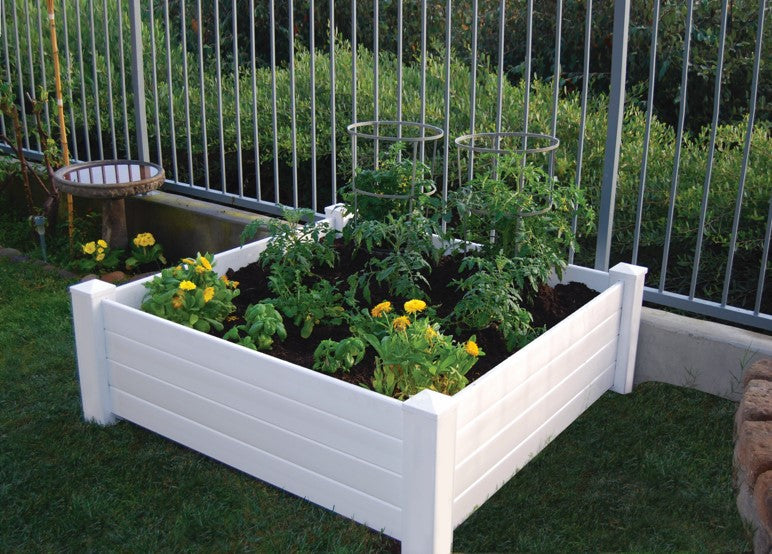How to plant a raised vegetable garden to get best results
Raised garden boxes make vegetable gardening easy. Garden boxes eliminate the need to dig up soil and remove unwanted rocks, grass and weeds.All you need is soil, seeds, water and sunlight.
Follow these steps and you are on your way to a creating a beautiful vegetable garden:
Step 1: Set up your raised garden bed
We recommend placing your raised garden bed in a level area. For best results place the garden bed based on your plants’ requirements. If the plants need lots of sunlight choose an area that has at least six to eight hours of sunlight. If you are planting herbs that require less sunlight place the garden box accordingly.

Step 2: Choke out weeds
One huge benefit of raised garden beds is you can place them directly over grass and weeds. When doing this we recommend using a good quality landscape fabric to line the bottom of the garden bed. This will prevent grass and weeds from entering the soil in the garden bed.
Step 3: Garden soil
For best growing results it is recommended to use a good quality soil that has a mixture of compost or manure to feed your garden throughout the growing cycle.If you are planting root crops like carrots and parsnips, you will need at least 12 inches of soil. If growing vegetables with shallow root systems like lettuce and peas you can get away with six to eight inches of soil.
Remember: the better the soil, the better your harvest will be.
Step 4: Plant placement
It is important to consider the different types of plants you are planting and how much room they will need when fully grown.Over-planting will result in plants being stunted and not capable of producing quality vegetables.
We recommend checking individual plant tags to determine the proper amount of spacing required for optimal growth.

Step 5: Companion planting
Not all plants grow well when placed beside other plants. Others, such as tomatoes and onions, grow well together as they do not interfere with each other’s root systems.
Step 6: Maximizing the harvest
To get the most out of your garden space, plant crops like carrots and beets between rows of plants that have a shorter harvest, like beans, cucumbers and lettuce.
This approach will allow you to enjoy fresh vegetables all season.
Step 7: Enjoy your results
Now it is time to enjoy what you have planted. All that is left to do to ensure a great harvest is to properly water and weed your raised garden bed.
ENJOY!
Click here for NuVue’s complete line of raised garden beds.

